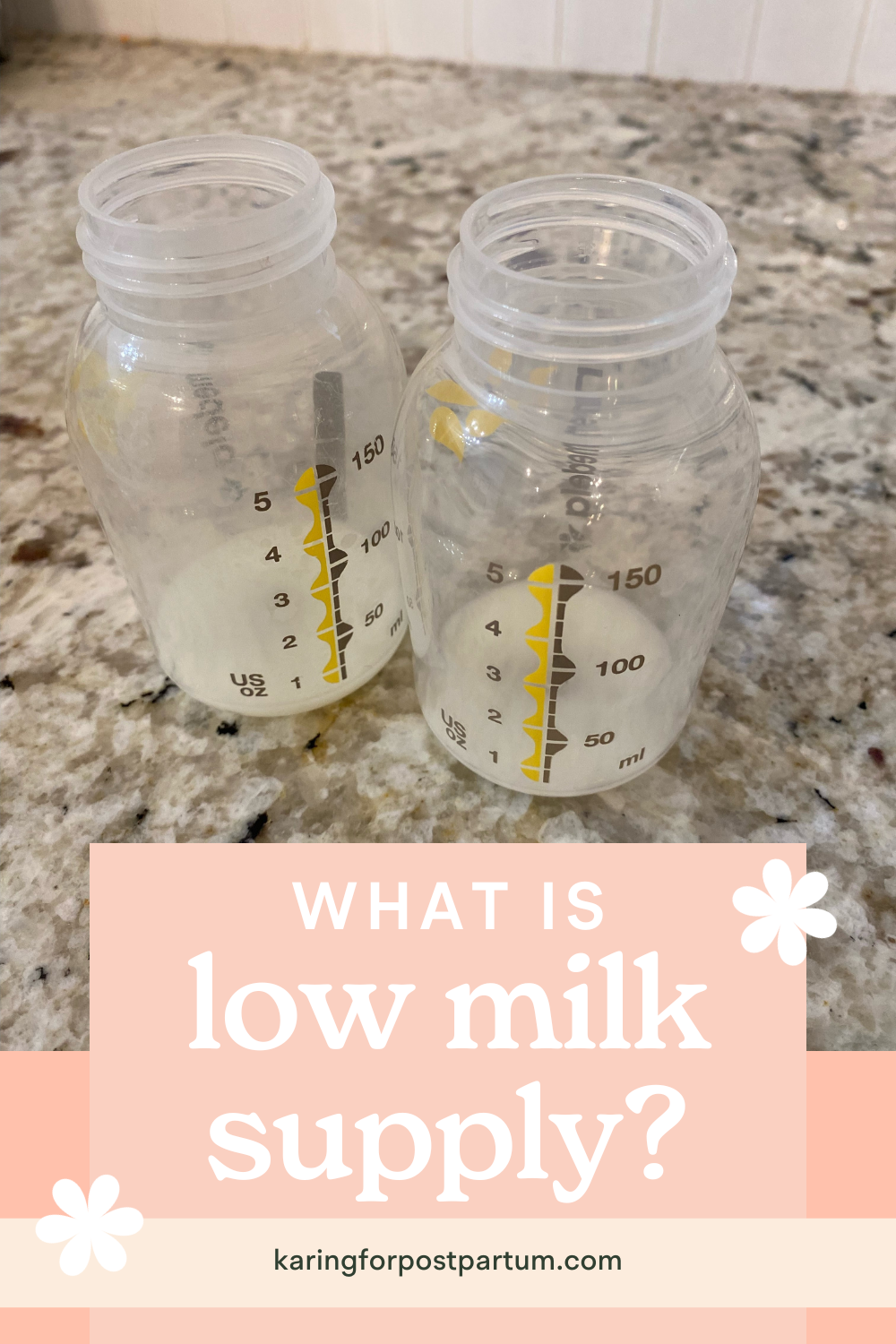What Is Low Milk Supply?
Let’s talk about it… ‘low’ milk supply. Seems like a simple concept, right? Not always. Low milk supply is when your body is not producing enough milk to meet the needs and demand of your growing baby. Let’s get into it!
perceived LOW SUPPLY
Before diving into low supply + some causes, let’s touch on perceived low supply. Perceived low supply is different than low supply. However, perceived low supply can potentially lead to a low supply. Confusing? Yeah. Let me explain.
Perceived milk supply is defined as defined as “a maternal belief that her breast milk production is inadequate for her infant’s needs” (Hill PD, Humenick SS, 1996). Many times, mothers may suspect “low milk supply” due to baby’s crying or needing to feed frequently (especially in the early weeks). In fearing a low supply being the cause, they may delay breastfeeding until they feel milk amount in breast is “adequate”, or introduce formula supplementation because they assume that they “aren’t making enough for their baby”. “Studies suggest that approximately 25%- 73% of mothers engage in early unnecessary cessation of breastfeeding due to perceived low milk production” (Otsuka K, Dennis CL, Tatsuoka H, Jimba M, 2008). When we begin supplementing (when not medically indicated or by our own choice), we essentially begin telling our body that milk isn’t being demanded or used, so it doesn’t need to be produced. Over a little time, supply will slowly diminish for this reason. Remember, our body doesn’t know that baby is getting a bottle off to the side… we have to tell our body that baby is being fed (with a pump or baby at breast).
This obviously is not the case in all circumstances. There are many mothers who experience a low supply, not just a “perceived” low supply. We will get into that next. However, this is why I feel that breastfeeding education is incredibly important— starting in pregnancy. Feeling informed and educated on what to expect with breastfeeding can help bring up anxieties or potential fears with your care team ahead of time, so you can address them early on! You may be quicker to notice any potential issues, or address questions you have when you have the proper information!
low milk supply
“Producing an amount of breastmilk less than the volume required to sustain a healthy infant growth by exclusive breastfeeding” (Sultana, 2013) is the definition of a low milk supply. There are two facets of low milk supply, which we will get in to next. Babies take in a range of 20-32oz per day, with an average of ~25oz per day for exclusively breastfed infants. Low milk supply can occur in many different ways, for many different reasons.
SO, WHAT’S expected?
Per the WHO + AAP:
In those first few days, infant loss should not exceed 7-10%.
No further weight loss should occur by Day 5
Baby should regain birth weight by 2 weeks
0-4 months: typically gain 5.5-8+oz/week (though this can vary)
WHAT ARE signs OF LOW SUPPLY?
When worried about milk supply, meeting with your LC can help in addressing potential issues. Signs of low milk supply vary from person to person. It’s best to address any concerns with your care team, however, it’s also important to know what may be a potential concern as well. Here are some things that would be worth addressing with your LC!
insufficient diaper output for age
signs of dehydration in baby (sunken fontanelle, dry/cracked lips, etc)
baby falling off their growth curve, poor weight gain according to their curve (NOT percentiles)
unable to hear swallowing during feeds
more than 4 sucks between swallows during a nursing session
closed fists, baby still seeming hungry after each feeding
irritability/fussiness, or lethargy
If you’re noticing any of these, talk with your LC, pediatrician, and care team so that they can properly assess your feeding sessions and develop an appropriate plan that works for YOU alongside you + your baby.
causes OF LOW SUPPLY
So, why does it happen? With low supply, there are actually 2 facets: primary + secondary low supply. Women with these circumstances may not always struggle with milk supply, but it’s something to address!
Primary low supply
Medical issues or anatomical factors in the mother contributing to low milk supply
hormonal imbalances (thyroid, PCOS, etc)
breast hypoplasia/IGT (insufficient glandular tissue)
history of diabetes
maternal hypertension
previous breast surgery
maternal postpartum hemorrhage or retained placenta
Secondary low supply
Issues arising with breast emptying or milk transfer; these occur after birth and can interfere with starting or continuing breastfeeding
lip, tongue, or buccal ties causing inadequate milk transfer and ineffective breast emptying
ineffective or shallow latch causing inadequate milk transfer and ineffective breast emptying
ineffective or weak suck reflex in newborn
delayed initiation of breastfeeding
if exclusively pumping, improperly sized pump flanges or ineffective equipment
infant medical conditions effecting breast drainage
Need to know the “secrets” to increasing your milk supply if none of the above applies? Check out this post!
All in all, it’s best to chat with your LC if you have questions or are experiencing a potential low supply. Trust me, no question is a “dumb” question! If you’re curious or worried about something— your LC and care team are there to help you address the situation so you can feel confident with feeding you baby (whatever that may look like!). Depending on the cause of low supply, there can be ways to work through it and/or ways to supplement alongside your breastfeeding journey. Breastfeeding doesn’t always have to be “all or nothing”. Education, assessment, implementation and coming up with a plan as a team is your best bet!
Was this helpful? Save it for later!




